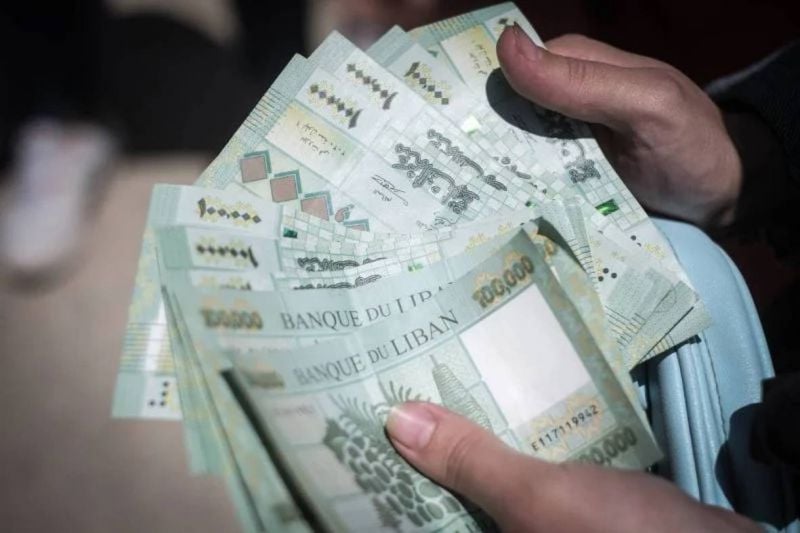
Since July 31, the US dollar has exchanged for less than LL90,000. (Credit: João Sousa)
For seven months Lebanon has been mired in an unprecedented crisis, in the absence of a president or a full-fledged cabinet. While a temporary solution was narrowly found to secure the helm of the central bank, whose coffers are almost empty, the Lebanese lira has not traded above LL100,000 to the US dollar on the parallel market since the end of March.
More surprising is that, despite the uncertainty about Lebanon being drawn into the Israel-Hamas war, the lira’s exchange rate remains unfailingly steady. It remained unchanged at LL89,700 to the dollar between Oct. 8 and Thursday evening, according to lirarate.com.
Dollarization
In “times of exogenous shock or uncertainty in a country, the local currency is normally exchanged against stable benchmarks — like gold or the dollar — to protect itself against a possible depreciation,” said economist Albert Kostanian.
This is in fact what happened in the early years of the Lebanese crisis, causing the lira to lose more than 98 percent of its value — although no figures are available on gold purchases by the population during this period.
“It is generally these movements of stocks of national currency exchanged for other stable assets that cause fluctuations in their value. In the case of Lebanon, however, there is no longer this kind of lira stock for sale,” added Kostanian.
This is partly because BDL’s Sayrafa platform, which enabled users to make profits by buying dollars at a lower price and then selling them for lira at a higher rate, no longer exists. This is partly because the national currency has lost all its functions as a store of savings vehicle, a medium of exchange and a price display.
“The dollar has de facto replaced the national currency in most cases, relegating the latter to a marginal role,” said Siham Rizkallah, a professor specializing in monetary policy at Saint-Joseph University in Beirut.
Illusion
Rizkallah says the dollarization of the economy has significantly eased the pressure on the lira, while contributing to another phenomenon.
“We are now seeing the effects of the increased speed with which dollars are circulating in the economy.”
In practical terms, this means that these currencies are circulating more widely in the hands of different economic agents, who perceive them as less scarce and are saving less of them. This phenomenon is linked in particular to the fact that more employers have reported that they have started to pay all or part of their salaries in foreign currency.
How long can this apparent anomaly on the foreign exchange market last? “It should be noted that the lira rate is stabilized,” said Rizkallah, “not stable.”
This stability “is only illusory and reflects BDL’s ongoing intervention in the foreign exchange market,” warned former Economy Minister Nasser Saidi.
Although the central bank’s foreign exchange reserves over the past two weeks have not yet been made public, they had already fallen by 2.7 percent between the end of July — the last day of former governor Riad Salameh term of office — and the end of September, to $7.1 billion (excluding gold and Eurobonds).
BDL’s former governor expressed fears that “this policy will eventually lead to the total end of the population’s deposits with the central bank, at the risk of seeing populist calls for the liquidation of [BDL’s] gold holdings.”
This story first ran in French, translated by Joelle Khoury.